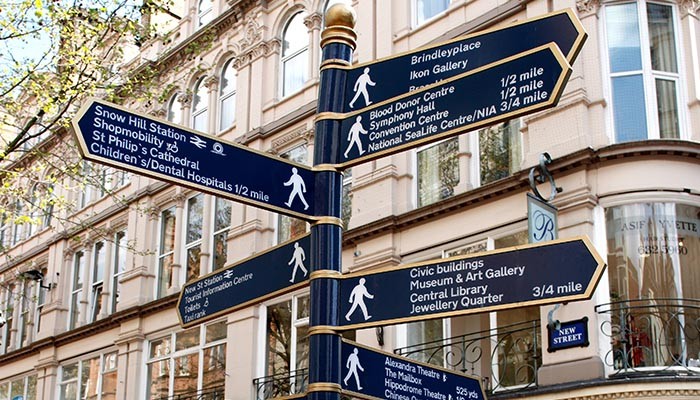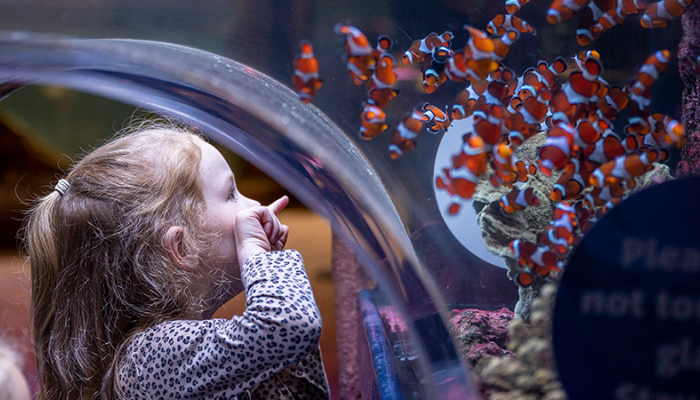Exotic plants and butterflies are just a few of the things you can see on a trip to Birmingham Botanical Gardens. Escape the busy city centre and unwind among the fabulous floral displays.
You don’t have to be a clued-up gardener to enjoy a day at Birmingham Botanical Gardens. Visit the bouquet of Brum with your family, friends or partner and explore the 15 acres of fragrant flowers, preened grounds and giant greenhouses. Bring a picnic or stop at the Pavilion Tea Room for a refreshing drink or a bite to eat.
The Botanical Gardens Birmingham opening times vary throughout the year, but generally, it’s between 10:00 to 16:00. Allow at least three to four hours for your visit. Get off at Birmingham New Street and Five Ways to check out this year-round attraction.
The Birmingham Botanical Gardens retains its beauty throughout all four seasons, rain or shine there are plenty of intriguing plants and vibrant blooms to see. Also, when you travel to Birmingham Botanical Garden by train, you get 2FOR1 entry .
The glasshouses
The controlled temperatures and unusual plants of the glasshouses will give you that holiday feeling when you step inside. Each of the four Victorian giant greenhouses (and the new Alpine House) replicates environments from different areas of the world so exotic plants can thrive all year round. You’ll see giant leaves, strange flowers and sweet-smelling fruits that you’ve probably never seen before.
Multi-coloured flowers, the para-rubber tree and cocoa are some of the plants that grow in hot and humid areas near the equator which live in the Tropical House . Peer into the pool to spot the colourful koi carp. Rugby ball-sized citrons, oranges and pomegranates are among the foliage with a kaleidoscope of colours in the Mediterranean glasshouse .
Spiky cacti and moisture-filled succulents which grow in the deserts of Australia and dry cliffs of South Africa are inside the Arid House . Palms, tree ferns and a giant bird-of-paradise plant soak up the humidity of the Subtropical House . Discover plants of Earth's mountain ranges in the Alpine House – don’t miss the National Cyclamen collection here.
Butterfly wonderland
Don’t move a muscle – on a sunny day, if you’re lucky, a fluttering friend might land on you. On cloudy days the butterflies prefer to relax on the foliage. Inside the Butterfly House , the atmosphere is similar to the Philippines, Central America and tropical areas of Africa, which is perfect for hatching butterflies. When they’re hungry, you’ll spot them snacking on the sugary sap and fermenting fruits
Between May and September, you can walk among the vivid tropical butterflies. Keep an eye out for the Black Swallowtail butterfly which has a 6 to 10 cm wingspan. It’s recognisable by its small yellow spots along the edge of its black wings and a blue patch at the bottom. The Great Mormon butterfly is also dark with almost translucent stripes and some small white teardrop-shaped markings at the bottom of its wings.
Spring buds
Waking up from sleepy winter temperatures, budding blooms in the Alan King Alpine Garden stretch their heads towards the low early spring sun. Look closely at the native Paque flower, Pulsatilla vulgaris , which wears a spectrum of purple shades from deep bold to pastel. You might notice these bell-shaped flowers have fine hairs, giving them a soft furry appearance.
When spring is in full swing, towards April time, in the Rock Garden the silky buds of the Star Magnolia burst open – revealing a star-shaped flower. Its elegant white petals are sometimes flushed with powdery pink hues. Stick your nose in the air and inhale the citrusy undertones and candy-sweet accents.
Summertime specials
A symbol of England, the national flower, and a symbol of love. If you’re in the mood for romance, head to Rose Garden in early summer. In full bloom, David Austin's New English Roses and Rosa's ‘White Pets’ will radiate fruity and musky scents.
From classic British delights to edens of Mexico and Costa Rica. Clusters of slender burnt orange flowers with dangling white anthers dusted with pollen will grab your attention in the Lawn Aviary Garden. These unusual Fuchsia fulgens are native to Central and South America and might be like none you’ve seen before.
Rich Autumn delights
In the season of pumpkin patches, deep autumnal colours as crisp dark evenings, the glowing yellow Japanese lantern-like Kiregeshoma palmata along Wilson Walk shine bright. The bell-shaped flowers peek through the green maple-like of this low-lying shrubby plant.
Later in the year, the Pinetum comes to life with bold purple fruits of the beautyberry, Callicarpa bodinieri . Squishy blue pods of the ‘dead men’s fingers’ will catch your eye – which have edible flesh inside. This gruesomely named Chinese plant is called a Decaisnea fargesii.
Winter wonders
Rich and spicy aromas of winter shrubs like Witch Hazel and Christmas Box are overpowering in the Winter Border of the Lawn Aviary Garden. Flame-like fiery red roots of the Midwinter Fire and the sulphur yellow waxy petals of the Wintersweet glow in every lighting. You’ll also see the Daphne bholua - or Nepalese paper plant - which are native to the Eastern Himalayan mountains. Despite the delicate appearance of its small pale pink flowers, these are some of the hardiest cold weather plants.
After dark, the Birmingham Botanical Gardens puts on a winter light trail around Christmas time where glowing decorations illuminate a trail through the grounds. Stroll around as the installations light up while ambient music plays. This event can be enjoyed by all ages and must be pre-booked online in advance – tickets cost £21.25 for adults and £15.75 for children.
Handy tip: When you travel with West Midlands Railway, you can get exclusive 2FOR1 deals, 1/3 OFF savings and many other great discounts available at top attractions in and around Great Britain. You can get into bloom soon as well with our Off-Peak tickets.
You can purchase your ticket via the West Midlands app.




